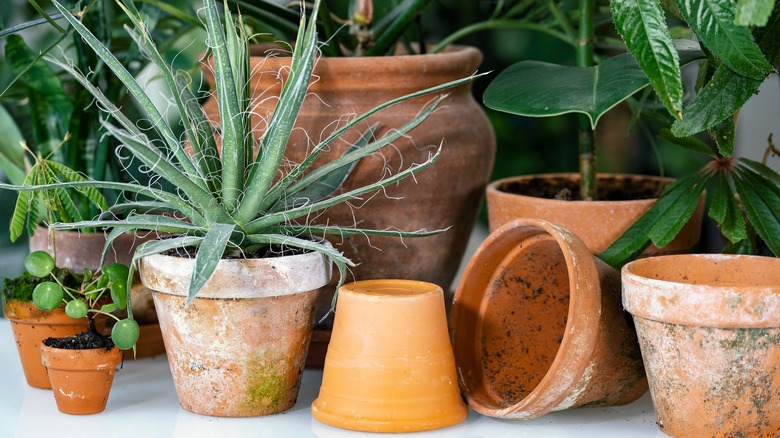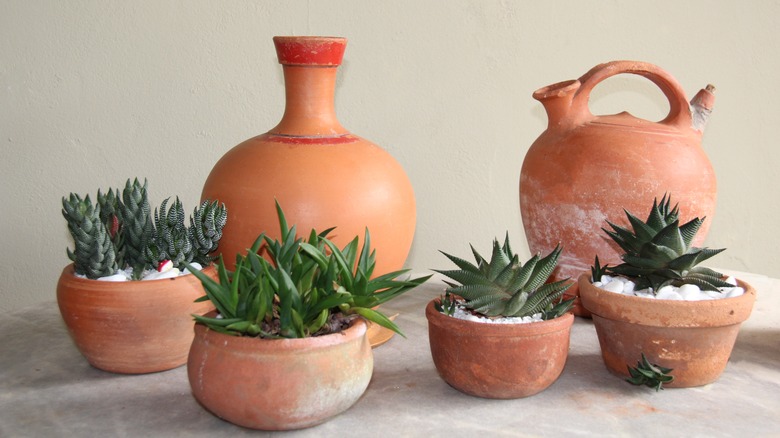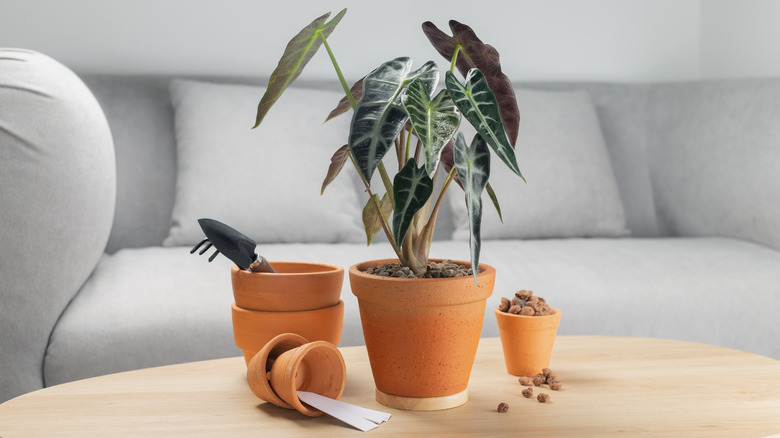How To Get Salt Stains Off Your Clay Pots
Are you unsure about what pot is best for your plants? If you're known for accidentally killing plants by overwatering them, you may want to try clay pots. Terracotta pots not only look timeless beside luscious green foliage and colorful flowers, but their porosity supports your plant's health. Clay is better than plastic because it allows air to move through the soil. Plant roots grow stronger and healthier when they have air movement from well-draining soil and a clay pot.
Since clay is a breathable material, planters made out of it can absorb any excess water that the potting mix can't hold. This prevents your plants from drowning if you overwater them. The color of the pot will also become darker as it picks up moisture, cueing you that the amount you're using is too much. While this is a good marker for overwatering, it can also show you if your plant has an excess amount of salt in its soil. When this happens, your clay pot will be covered with dusty white salt stains.
What causes salt stains
Salt stains appear on clay pots for two reasons. First, you should check what type of water you use for your plants. If it's tap, you may have hard water that contains salts and minerals. When you water your plants with this, their roots won't take all the extra salt. Then your clay pot absorbs excess water, but the planter is stained by the minerals after evaporating. If you are already using distilled or bottled water, you should consider what type of fertilizer you give your plants.
Fertilizers also contain minerals like calcium and salt, and similar to hard water, your plant will only take what it needs. The excess salt will be left in the soil and water. Then it will end up in your clay pot since it's porous. It's dangerous to leave these stains on your planter because when they're on the inside of the pot, they will cause damage to the roots and even kill your plant. If you like the aged look they create on terracotta, leaving it on only the outside is okay.
Clean the inside of your clay pots
Lucky for you, cleaning salt stains from clay pots is fairly simple. The most time-consuming part is that your plant will need to be removed from the pot. Once you've rehomed your plant for the time being, you'll need to dilute vinegar or bleach. Either one will work, so choose what you feel most comfortable using or already have at home. Mix 1 part bleach for every 9 parts of water, or if you prefer distilled white vinegar, use 1 part for 20 parts of water.
With a firm brush, scrub the solution onto the inside of your pot. Then rinse it with plain water. If you have difficulty removing the stains, you can try something more abrasive. First, create a paste by adding water to some baking soda. Then repeat the same step as before, using the brush to clean the stains. Continue rinsing it off and returning with the solution until the dusty white marks are gone. Once the clay is completely dry, you can repot your plant.


